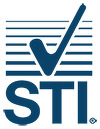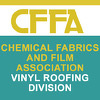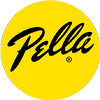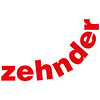
American Institute of Architects
As the largest design organization in the world, AIA is working to transform the day-to-day practice of architecture to achieve a zero-carbon, resilient, healthy, just, equitable built environment, for everyone.
Click to Learn More About the AIA
Visit www.aia.org and Join Now!
Scan this code with your mobile device camera to take this page on-the-go!

https://redirect.aecdaily.com/s18122/www.aecdaily.com/course/969299

 The principles, tools, and techniques for sustainable community planning (SCP) outlined in Part 1 of this course have evolved into various approaches to the actual implementation of SCP around the world. These approaches have been developed in response to local context and in communities ranging in size and form from large cities to small ecovillages and housing clusters. Part 2 of this course describes a number of these approaches for both land and water and also suggests a means of integrating them into a single, comprehensive planning model. The course concludes with case studies of a range of built sustainable community examples and planning exercises and includes some of the lessons learned.
The principles, tools, and techniques for sustainable community planning (SCP) outlined in Part 1 of this course have evolved into various approaches to the actual implementation of SCP around the world. These approaches have been developed in response to local context and in communities ranging in size and form from large cities to small ecovillages and housing clusters. Part 2 of this course describes a number of these approaches for both land and water and also suggests a means of integrating them into a single, comprehensive planning model. The course concludes with case studies of a range of built sustainable community examples and planning exercises and includes some of the lessons learned.
Scan this code with your mobile device camera to take this page on-the-go!

https://redirect.aecdaily.com/s1773/www.aecdaily.com/course/988588

 Louvers are an essential part of every HVAC system, facilitating appropriate airflow and inhibiting unwanted penetration by water, snow, or debris through wall openings and into HVAC ductwork. However, they can have other purposes. Their simple design makes them a versatile addition and a unique style option to any project. This course presents the types, components, and applications of louvers, along with the primary specification considerations when selecting a louver solution.
Louvers are an essential part of every HVAC system, facilitating appropriate airflow and inhibiting unwanted penetration by water, snow, or debris through wall openings and into HVAC ductwork. However, they can have other purposes. Their simple design makes them a versatile addition and a unique style option to any project. This course presents the types, components, and applications of louvers, along with the primary specification considerations when selecting a louver solution.
Scan this code with your mobile device camera to take this page on-the-go!

https://redirect.aecdaily.com/s19863/www.aecdaily.com/course/1077571

 Firestopping is the process of sealing openings around penetrants or in joints or gaps between fire-rated assemblies to restore hourly fire resistance ratings. It is a critical part of fire containment and a balanced fire and life safety plan. This course outlines resources and code requirements that architects and designers should be aware of while preparing specifications for firestop systems in their projects. The course also reviews common mistakes to avoid.
Firestopping is the process of sealing openings around penetrants or in joints or gaps between fire-rated assemblies to restore hourly fire resistance ratings. It is a critical part of fire containment and a balanced fire and life safety plan. This course outlines resources and code requirements that architects and designers should be aware of while preparing specifications for firestop systems in their projects. The course also reviews common mistakes to avoid.
Scan this code with your mobile device camera to take this page on-the-go!

https://redirect.aecdaily.com/s907623/www.aecdaily.com/course/922905

 The acoustical comfort level in the workplace is a key measure of the quality of the indoor environment for building occupants. This course explores key concepts and characteristics of sound, as well as speech intelligibility and privacy and their associated acoustical remedies. Also presented is the use of sound absorbers and diffusers as acoustical solutions to noise problems.
The acoustical comfort level in the workplace is a key measure of the quality of the indoor environment for building occupants. This course explores key concepts and characteristics of sound, as well as speech intelligibility and privacy and their associated acoustical remedies. Also presented is the use of sound absorbers and diffusers as acoustical solutions to noise problems.
Scan this code with your mobile device camera to take this page on-the-go!

https://redirect.aecdaily.com/s976306/www.aecdaily.com/course/985229

 Made from one of the hardest and most abundant minerals in nature, engineered quartz is a beautiful, durable surface solution for a wide range of commercial and residential applications desiring the beauty of natural stone without its drawbacks. The raw materials of quartz surfacing are harvested from the Earth and formed into slabs via an innovative production process, resulting in a homogenous, nonporous material with superior performance and low maintenance requirements. Reviewed in this course are the features, fabrication guidelines, and design trends of quartz surfacing.
Made from one of the hardest and most abundant minerals in nature, engineered quartz is a beautiful, durable surface solution for a wide range of commercial and residential applications desiring the beauty of natural stone without its drawbacks. The raw materials of quartz surfacing are harvested from the Earth and formed into slabs via an innovative production process, resulting in a homogenous, nonporous material with superior performance and low maintenance requirements. Reviewed in this course are the features, fabrication guidelines, and design trends of quartz surfacing.
Scan this code with your mobile device camera to take this page on-the-go!

https://redirect.aecdaily.com/s1063182/www.aecdaily.com/course/1146165

 This course outlines four specific focus areas related to infection control, aimed at enhancing understanding of the importance of these considerations for construction projects. Hospitals utilize infection control teams to assist in creating safe, sanitary environments for providing healthcare to patients. It’s imperative to understand what these teams require to maintain this environment during new building projects and how the design and construction teams can collaborate with them to improve the overall design solutions, yielding spaces that are safer for both patients and staff.
This course outlines four specific focus areas related to infection control, aimed at enhancing understanding of the importance of these considerations for construction projects. Hospitals utilize infection control teams to assist in creating safe, sanitary environments for providing healthcare to patients. It’s imperative to understand what these teams require to maintain this environment during new building projects and how the design and construction teams can collaborate with them to improve the overall design solutions, yielding spaces that are safer for both patients and staff.
Scan this code with your mobile device camera to take this page on-the-go!

https://redirect.aecdaily.com/s5533/www.aecdaily.com/course/1121832

 Wind load can significantly impact buildings, affecting their structural integrity and safety. Perimeter roof edge systems are a primary safeguard during strong wind events. This course provides an overview of the types, features, and benefits of perimeter roof edge systems, system selection considerations, the impact of wind uplift on roofs, and the building codes and testing standards applicable to perimeter roof edge systems.
Wind load can significantly impact buildings, affecting their structural integrity and safety. Perimeter roof edge systems are a primary safeguard during strong wind events. This course provides an overview of the types, features, and benefits of perimeter roof edge systems, system selection considerations, the impact of wind uplift on roofs, and the building codes and testing standards applicable to perimeter roof edge systems.
Scan this code with your mobile device camera to take this page on-the-go!

https://redirect.aecdaily.com/s390008/www.aecdaily.com/course/929738

 White roofs made of PVC (vinyl) can reflect three-quarters or more of the sun's rays and emit 70% or more of the solar radiation absorbed by the building envelope. Despite protecting and keeping buildings cool in all climates around the world for decades, misconceptions about the energy impact of cool roofs still exist. This course uses the fundamental science behind cool roofs to address alleged issues concerning the performance of cool roof products.
White roofs made of PVC (vinyl) can reflect three-quarters or more of the sun's rays and emit 70% or more of the solar radiation absorbed by the building envelope. Despite protecting and keeping buildings cool in all climates around the world for decades, misconceptions about the energy impact of cool roofs still exist. This course uses the fundamental science behind cool roofs to address alleged issues concerning the performance of cool roof products.
Scan this code with your mobile device camera to take this page on-the-go!

https://redirect.aecdaily.com/s15106/www.aecdaily.com/course/947826

 Fenestration openings are a critical component of a building envelope, especially in present-day sustainable, energy-efficient buildings. Building envelopes play an important role in controlling the movement of heat, bulk water, and water vapor. Designing fenestration openings for buildings that use continuous exterior insulation has a significant role in reducing thermal bridging and thus conserving energy. This course reviews the impact of exterior insulation on fenestration installation design. The course also explores solutions for a wide variety of wall system variations.
Fenestration openings are a critical component of a building envelope, especially in present-day sustainable, energy-efficient buildings. Building envelopes play an important role in controlling the movement of heat, bulk water, and water vapor. Designing fenestration openings for buildings that use continuous exterior insulation has a significant role in reducing thermal bridging and thus conserving energy. This course reviews the impact of exterior insulation on fenestration installation design. The course also explores solutions for a wide variety of wall system variations.
Scan this code with your mobile device camera to take this page on-the-go!

https://redirect.aecdaily.com/s13250/www.aecdaily.com/course/909350

 Ensuring a building’s roof is waterproof, on top of being structurally sound, is critical to the success of any building project. This course examines rapid curing, polymeric liquid-applied waterproofing membranes for roofing and other demanding applications. Discussions include the history of PMMA, PMMA system components and characteristics, the installation process, and the versatility of PMMA products.
Ensuring a building’s roof is waterproof, on top of being structurally sound, is critical to the success of any building project. This course examines rapid curing, polymeric liquid-applied waterproofing membranes for roofing and other demanding applications. Discussions include the history of PMMA, PMMA system components and characteristics, the installation process, and the versatility of PMMA products.
Scan this code with your mobile device camera to take this page on-the-go!

https://redirect.aecdaily.com/s935013/www.aecdaily.com/course/944205

 Trees are essential for the health of the urban environment, mitigating the heat island effect, cleaning the air, reducing stormwater runoff, and improving residents’ health and well-being. But cities are often inhospitable to trees, where their growth may be stunted or their roots may damage surrounding infrastructure. This course explores ways to design successful projects incorporating green infrastructure by understanding the principles behind tree growth, proper type and amount of soil, water management, and the role of soil vault systems in helping urban trees thrive.
Trees are essential for the health of the urban environment, mitigating the heat island effect, cleaning the air, reducing stormwater runoff, and improving residents’ health and well-being. But cities are often inhospitable to trees, where their growth may be stunted or their roots may damage surrounding infrastructure. This course explores ways to design successful projects incorporating green infrastructure by understanding the principles behind tree growth, proper type and amount of soil, water management, and the role of soil vault systems in helping urban trees thrive.
Scan this code with your mobile device camera to take this page on-the-go!

https://redirect.aecdaily.com/s1078698/www.aecdaily.com/course/1097505

 Energy conservation and occupant well-being, comfort, and productivity are issues of increasing concern in building design. This course illustrates how radiant heating and cooling systems address these issues positively and efficiently. It encompasses the various types of systems available and how they can contribute to credit requirements in the LEED® v4.1 Building Design and Construction rating system and the WELL Building Standard™ version 2. System workings, design, aesthetic considerations, advantages, testing and measuring protocols, and installation procedures are reviewed, and the course concludes with several installation examples.
Energy conservation and occupant well-being, comfort, and productivity are issues of increasing concern in building design. This course illustrates how radiant heating and cooling systems address these issues positively and efficiently. It encompasses the various types of systems available and how they can contribute to credit requirements in the LEED® v4.1 Building Design and Construction rating system and the WELL Building Standard™ version 2. System workings, design, aesthetic considerations, advantages, testing and measuring protocols, and installation procedures are reviewed, and the course concludes with several installation examples.
Scan this code with your mobile device camera to take this page on-the-go!

https://redirect.aecdaily.com/s8547/www.aecdaily.com/course/986127

 Commercial restrooms are used in various settings, from office buildings to hospitals. This course discusses how commercial restroom design can meet the needs of all users through accessibility, universal design, and inclusive design. The public nature of restrooms requires excellent air quality, a trusted level of cleanliness, durability, and water conservation. The importance of fixtures with features including touchless technology, vandalism resistance, and water efficiency is also discussed.
Commercial restrooms are used in various settings, from office buildings to hospitals. This course discusses how commercial restroom design can meet the needs of all users through accessibility, universal design, and inclusive design. The public nature of restrooms requires excellent air quality, a trusted level of cleanliness, durability, and water conservation. The importance of fixtures with features including touchless technology, vandalism resistance, and water efficiency is also discussed.
Scan this code with your mobile device camera to take this page on-the-go!

https://redirect.aecdaily.com/s16445/www.aecdaily.com/course/1123692

 Dive into the intersection of design excellence and environmental responsibility with this comprehensive course on TFL decorative panels. Explore the intrinsic value of sustainability in the design world, unravel the complexities of the carbon cycle, and uncover how forests and wood play pivotal roles in carbon sequestration. Discover the versatile applications and climate-positive attributes of TFL panels, empowering you to make informed, eco-conscious choices in your design projects. Elevate your understanding of exceptional design, durability, and sustainability, and contribute to a greener, more resilient future.
Dive into the intersection of design excellence and environmental responsibility with this comprehensive course on TFL decorative panels. Explore the intrinsic value of sustainability in the design world, unravel the complexities of the carbon cycle, and uncover how forests and wood play pivotal roles in carbon sequestration. Discover the versatile applications and climate-positive attributes of TFL panels, empowering you to make informed, eco-conscious choices in your design projects. Elevate your understanding of exceptional design, durability, and sustainability, and contribute to a greener, more resilient future.
Scan this code with your mobile device camera to take this page on-the-go!

https://redirect.aecdaily.com/s771083/www.aecdaily.com/course/1061935

 Over time, different types of concrete have been developed for a variety of architectural applications, including cast stone, precast panels and shapes, glass fiber reinforced concrete (GFRC), and ultra-high-performance concrete (UHPC). These concrete forms differ in physical properties, applications, and cost. This course reviews the four essential types of architectural precast including their composition, functions, advantages, and specifications to facilitate the proper selection based on project requirements.
Over time, different types of concrete have been developed for a variety of architectural applications, including cast stone, precast panels and shapes, glass fiber reinforced concrete (GFRC), and ultra-high-performance concrete (UHPC). These concrete forms differ in physical properties, applications, and cost. This course reviews the four essential types of architectural precast including their composition, functions, advantages, and specifications to facilitate the proper selection based on project requirements.
Scan this code with your mobile device camera to take this page on-the-go!

https://redirect.aecdaily.com/s625463/www.aecdaily.com/course/953018

 This course provides an overview of one-piece shower bases, glass shower enclosures, and accessories and includes discussions on methods of waterproofing shower floors, shower design, and installation and tiling guidelines for shower pans and accessories.
This course provides an overview of one-piece shower bases, glass shower enclosures, and accessories and includes discussions on methods of waterproofing shower floors, shower design, and installation and tiling guidelines for shower pans and accessories.
Scan this code with your mobile device camera to take this page on-the-go!

https://redirect.aecdaily.com/s14550/www.aecdaily.com/course/1127759

 Building a stronger connection with nature is critical to maintaining human health and well-being. Composite wood decking is a durable, environmentally sustainable product that can help build links with nature through outdoor living spaces. This course examines the different decking options and explains the sustainability benefits of using composite decking and how it can help meet green building requirements. Various design innovations that enhance occupant well-being are also discussed.
Building a stronger connection with nature is critical to maintaining human health and well-being. Composite wood decking is a durable, environmentally sustainable product that can help build links with nature through outdoor living spaces. This course examines the different decking options and explains the sustainability benefits of using composite decking and how it can help meet green building requirements. Various design innovations that enhance occupant well-being are also discussed.
Scan this code with your mobile device camera to take this page on-the-go!

https://redirect.aecdaily.com/s20103/www.aecdaily.com/course/1010555

 Integrated fire and smoke door systems meet all life safety and compartmentalization requirements without sacrificing an architect’s vision. This course explains how multiple codes and standards apply to an opening, elevator lobby, and elevator shaft and discusses how integrated door systems provide building owners with a complete turnkey door system that uses components engineered to work as a unified whole.
Integrated fire and smoke door systems meet all life safety and compartmentalization requirements without sacrificing an architect’s vision. This course explains how multiple codes and standards apply to an opening, elevator lobby, and elevator shaft and discusses how integrated door systems provide building owners with a complete turnkey door system that uses components engineered to work as a unified whole.
Scan this code with your mobile device camera to take this page on-the-go!

https://redirect.aecdaily.com/s728117/www.aecdaily.com/course/1120702

 Today, AI and other high-performance computing applications are driving the adoption of high-density racks in data centers. The exponential growth of data and rising demand for efficient, reliable infrastructure require innovative solutions. With rising power densities comes the need for data center operators to reassess their cooling strategy. Many are turning to liquid cooling solutions as they offer superior heat-conduction capabilities. This presentation explores the different types of liquid cooling solutions, from immersion to single-phase direct-to-chip to two-phase direct-to-chip. Learn more about the need to adopt liquid cooling solutions that offer high performance and efficiency and discover how leveraging an innovative liquid cooling technology with an integrated cabinet system to efficiently manage heat in high-density data center environments can enhance performance, reliability, and energy efficiency.
Today, AI and other high-performance computing applications are driving the adoption of high-density racks in data centers. The exponential growth of data and rising demand for efficient, reliable infrastructure require innovative solutions. With rising power densities comes the need for data center operators to reassess their cooling strategy. Many are turning to liquid cooling solutions as they offer superior heat-conduction capabilities. This presentation explores the different types of liquid cooling solutions, from immersion to single-phase direct-to-chip to two-phase direct-to-chip. Learn more about the need to adopt liquid cooling solutions that offer high performance and efficiency and discover how leveraging an innovative liquid cooling technology with an integrated cabinet system to efficiently manage heat in high-density data center environments can enhance performance, reliability, and energy efficiency.
Scan this code with your mobile device camera to take this page on-the-go!

https://redirect.aecdaily.com/s6403/www.aecdaily.com/course/1045555

 Prefabrication, in whole or in part, is a rapidly growing construction trend that has influenced how buildings and their components are being designed and assembled on- or off-site. This course provides an overview of the various prefabrication approaches, focusing on prefabricated bathrooms. It explores how designers can identify the prefabricated bathroom products and suppliers that best integrate with building prefabrication to optimize product and building benefits, economies, performance, and quality.
Prefabrication, in whole or in part, is a rapidly growing construction trend that has influenced how buildings and their components are being designed and assembled on- or off-site. This course provides an overview of the various prefabrication approaches, focusing on prefabricated bathrooms. It explores how designers can identify the prefabricated bathroom products and suppliers that best integrate with building prefabrication to optimize product and building benefits, economies, performance, and quality.
Scan this code with your mobile device camera to take this page on-the-go!

https://redirect.aecdaily.com/s18525/www.aecdaily.com/course/1039961

 Light is fundamental to life, and Earth’s 24-hour light–dark cycle directly impacts our physiology and behavior. Indoors, reduced exposure to daylight and increased exposure to electric light after dark interfere with circadian rhythms. This course examines how circadian rhythms affect human performance, health, and well-being, the receptors in the eye that send visual and nonvisual responses to the brain, the action spectrum for circadian stimulus, and the metrics used to quantify circadian-stimulus light. Also presented are methods for applying circadian-effective lighting systems to satisfy the requirements of WELL Building Standard™ v2, Light, Feature L03, Circadian Lighting Design.
Light is fundamental to life, and Earth’s 24-hour light–dark cycle directly impacts our physiology and behavior. Indoors, reduced exposure to daylight and increased exposure to electric light after dark interfere with circadian rhythms. This course examines how circadian rhythms affect human performance, health, and well-being, the receptors in the eye that send visual and nonvisual responses to the brain, the action spectrum for circadian stimulus, and the metrics used to quantify circadian-stimulus light. Also presented are methods for applying circadian-effective lighting systems to satisfy the requirements of WELL Building Standard™ v2, Light, Feature L03, Circadian Lighting Design.
Scan this code with your mobile device camera to take this page on-the-go!

https://redirect.aecdaily.com/s877426/www.aecdaily.com/course/938800

 Mechanical vibration and structure-borne noise exist in all building environments. Depending on how severe the disturbance and how sensitive the equipment, the problems caused by the vibration or shock can be negligible or destructive. This course explains why, during the entire building design process, it is essential to consider what a building is being used for and the potential impact of vibration and structure-borne noise, not only from external sources but also from equipment running within the building.
Mechanical vibration and structure-borne noise exist in all building environments. Depending on how severe the disturbance and how sensitive the equipment, the problems caused by the vibration or shock can be negligible or destructive. This course explains why, during the entire building design process, it is essential to consider what a building is being used for and the potential impact of vibration and structure-borne noise, not only from external sources but also from equipment running within the building.
Scan this code with your mobile device camera to take this page on-the-go!

https://redirect.aecdaily.com/s1078641/www.aecdaily.com/course/1088872

 This course introduces the learner to the benefits and design advantages of porcelain surface material for both indoor and outdoor use in residential and commercial projects. Since it is a relatively new material in the US, we will review its components and manufacture and how they result in a product with exceptional characteristics for human health and durability. We'll also show and discuss indoor and outdoor applications, the variations available for vertical and horizontal applications, and the many design options. Finally, we’ll help the learner understand what is needed to design with this material and how to work with a fabricator.
This course introduces the learner to the benefits and design advantages of porcelain surface material for both indoor and outdoor use in residential and commercial projects. Since it is a relatively new material in the US, we will review its components and manufacture and how they result in a product with exceptional characteristics for human health and durability. We'll also show and discuss indoor and outdoor applications, the variations available for vertical and horizontal applications, and the many design options. Finally, we’ll help the learner understand what is needed to design with this material and how to work with a fabricator.
Scan this code with your mobile device camera to take this page on-the-go!

https://redirect.aecdaily.com/s993236/www.aecdaily.com/course/1094117

 Windows provide natural light and ventilation and add character to the interior and exterior of the home. In addition to function and aesthetics, performance must be considered in the specification process. Fortunately, rigorous testing standards and labeling programs enable designers to make informed choices. Examined here are window standards, certifications, testing, and labeling; window types and components; and window specification and installation considerations.
Windows provide natural light and ventilation and add character to the interior and exterior of the home. In addition to function and aesthetics, performance must be considered in the specification process. Fortunately, rigorous testing standards and labeling programs enable designers to make informed choices. Examined here are window standards, certifications, testing, and labeling; window types and components; and window specification and installation considerations.
Scan this code with your mobile device camera to take this page on-the-go!

https://redirect.aecdaily.com/s777575/www.aecdaily.com/course/788434

 Architectural resin panels are engineered to suit the demands of a wide array of interior and exterior applications and offer almost unlimited combinations of color, pattern, and design. This course presents the features and options that allow resin panels to meet design requirements for both function and beauty and discusses how resin panels may play a role in projects seeking LEED® v4 BD+C, ID+C, and O+M; Living Building ChallengeSM v3.1; or WELL Building Standard® v1 certification.
Architectural resin panels are engineered to suit the demands of a wide array of interior and exterior applications and offer almost unlimited combinations of color, pattern, and design. This course presents the features and options that allow resin panels to meet design requirements for both function and beauty and discusses how resin panels may play a role in projects seeking LEED® v4 BD+C, ID+C, and O+M; Living Building ChallengeSM v3.1; or WELL Building Standard® v1 certification.